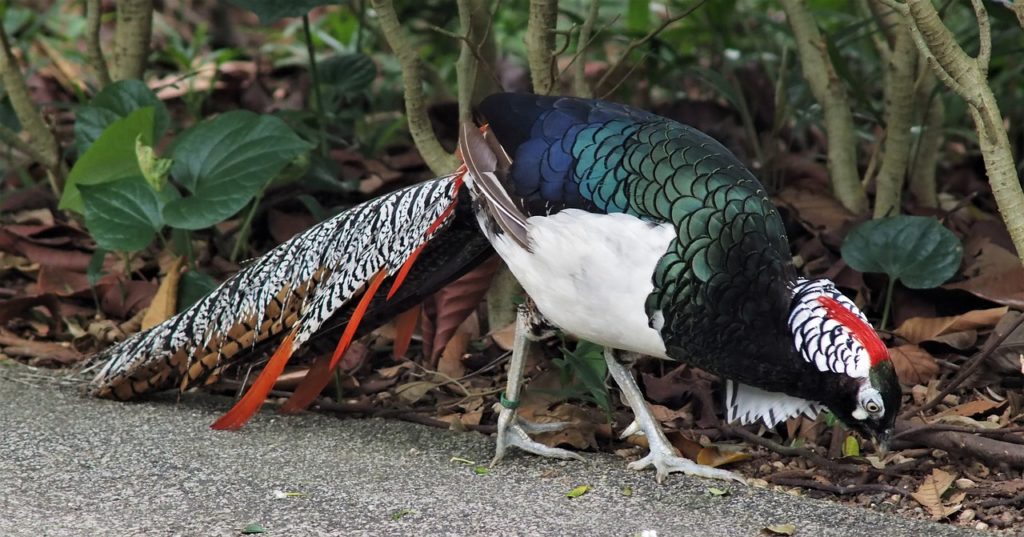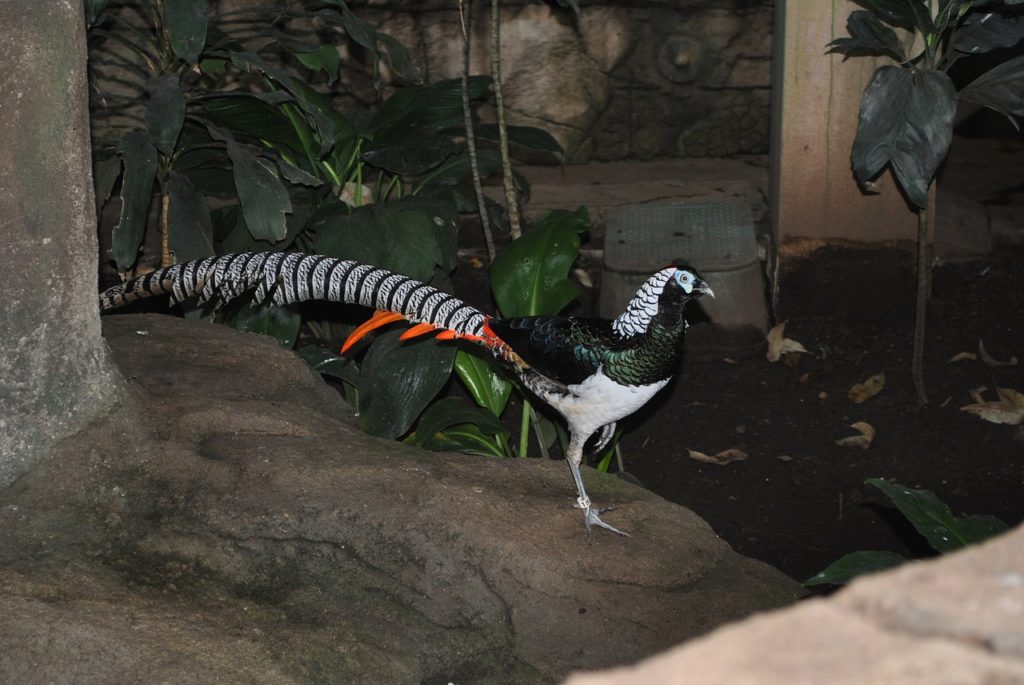Lady Amherst
(Chrysolophus amherstiae)
Each year in September we have more Lady Amherst pairs for sale until they are sold out for the year.
Range: Southwestern China and Myanmar (Burma), possibly Tibet, and there is a declining, feral population in Britain.
Habitat: Forests, particularly bamboo thickets.
Description: Males have silver heads with black barring; a cape or ruff of feathers that surround the head and neck during courting; red, blue, white and and yellow body feathers; and a showy, long, gray tail with slightly longer orange feathers along the edges.
Females are buff or brown with dark barring throughout and look quite similar to female Red Golden Pheasants. Lady Amherst’s are a bit larger and have bluish legs and bills, rather than the yellow of Red Golden’s.
Status in the wild: The International Union for the Conservation of Nature (ICUN) lists Lady Amherst’s Pheasants as being of “Least Concern,” which means there are healthy population levels in the wild.
Avicultural Data: Lady Amherst’s Pheasants are a good choice for private aviaries because they are hardy and relatively easy to keep. They do need a roomy area, so that their long tail feathers can be accommodated without breaking them. They also require shade and enjoy trees and shrubs with branches.
While it is fine to keep Lady Amherst’s with other types of birds such as doves, pigeons or ducks, there should be no possibility of cross breeding between Lady Amherst’s and Red Goldens. Such crossings create fertile hybrids which can damage the pure bloodlines of both species.
Status in aviculture: Lady Amherst’s are popular in zoos and avaries around the world because they are gorgeous and easy to keep.
Breeding Season: Breeding season begins in May and lasts through the autumn.
Clutch Size: 6-12 eggs
Incubation Period: 23-24 days
Miscellaneous Notes: Lady Amherst’s Pheasants are named after Lady Sarah Pitt Amherst, wife of Count William Pitt Amherst. Lady Amherst was the first to bring these beautiful birds to England and so introduce them to the world outside their natural habitat.
Lady Amherst’s Pheasants can fly but prefer not to. They are more comfortable running than flying.
Males develop their bright plumage at the age of two years, but can be fertile during their first year. Experts recommend not using them for breeding purposes until they are two years old.


